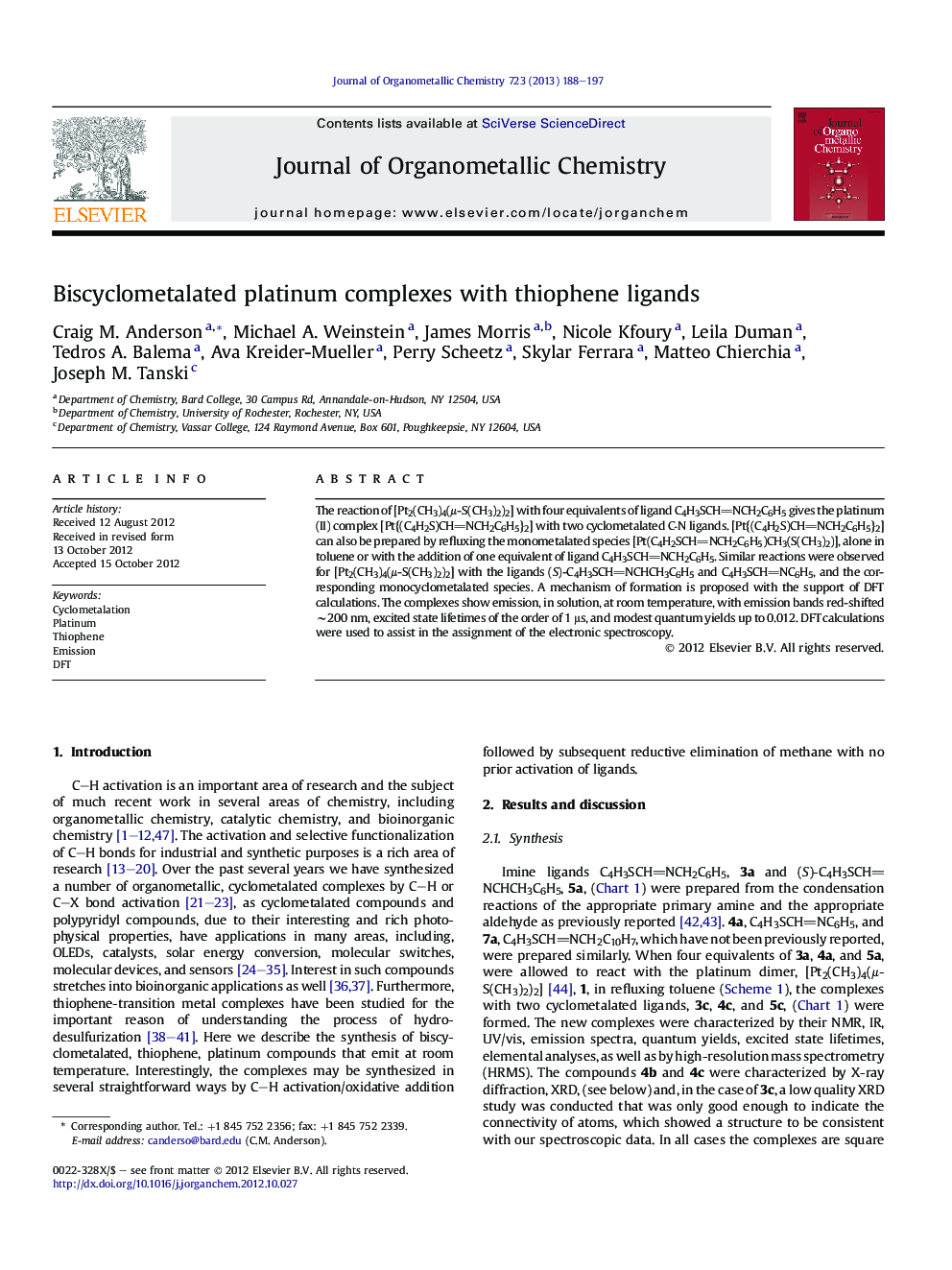| Article ID | Journal | Published Year | Pages | File Type |
|---|---|---|---|---|
| 1322969 | Journal of Organometallic Chemistry | 2013 | 10 Pages |
The reaction of [Pt2(CH3)4(μ-S(CH3)2)2] with four equivalents of ligand C4H3SCHNCH2C6H5 gives the platinum (II) complex [Pt{(C4H2S)CHNCH2C6H5}2] with two cyclometalated CˆN ligands. [Pt{(C4H2S)CHNCH2C6H5}2] can also be prepared by refluxing the monometalated species [Pt(C4H2SCHNCH2C6H5)CH3(S(CH3)2)], alone in toluene or with the addition of one equivalent of ligand C4H3SCHNCH2C6H5. Similar reactions were observed for [Pt2(CH3)4(μ-S(CH3)2)2] with the ligands (S)-C4H3SCHNCHCH3C6H5 and C4H3SCHNC6H5, and the corresponding monocyclometalated species. A mechanism of formation is proposed with the support of DFT calculations. The complexes show emission, in solution, at room temperature, with emission bands red-shifted ∼200 nm, excited state lifetimes of the order of 1 μs, and modest quantum yields up to 0.012. DFT calculations were used to assist in the assignment of the electronic spectroscopy.
Graphical abstractBiscyclometalated platinum complexes with thiophene-derived ligands were synthesized, in a straightforward manner that exhibited emission, in solution, at room temperature.Figure optionsDownload full-size imageDownload as PowerPoint slideHighlights► Synthesis of title complexes were accomplished without prior activation of ligands. ► Complexes exhibit emission in the visible region at room temperature. ► DFT calculations assisted in electronic assignments.
